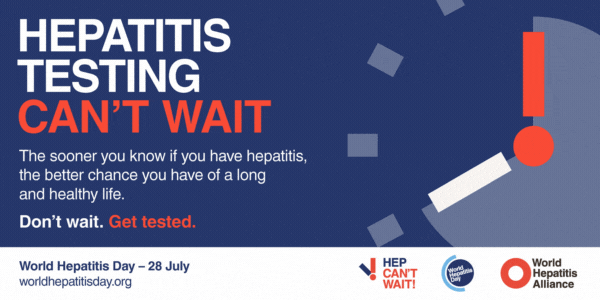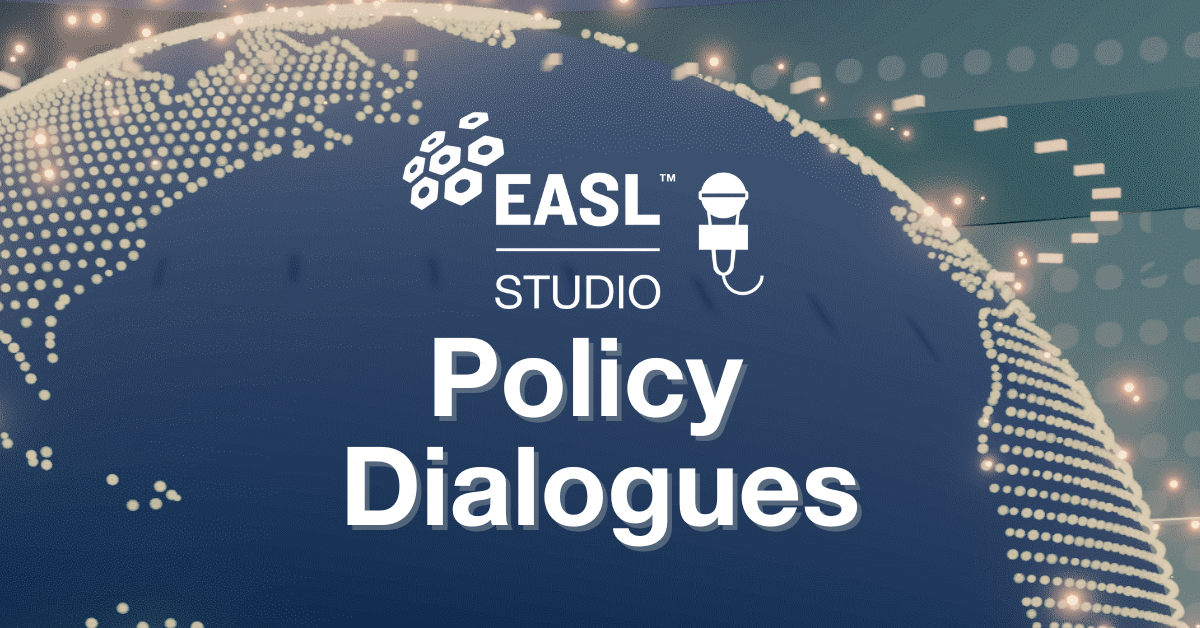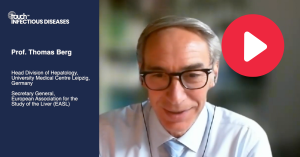EASL marks World Hepatitis Day 2022, voicing commitment to eliminating hepatitis
28 July 2022
This World Hepatitis Day, EASL revoices commitment to working towards the elimination of viral hepatitis and striving towards the World Health Organization’s goal of a hepatitis-free world by 2030. To mark this important day, we are launching the EASL Policy Dialogues video series, publishing two important articles in the Journal of Hepatology, running interviews on hepatitis, and joining this year’s campaign run by the World Health Organisation and the World Hepatitis Alliance.
The 2022 theme is: “Bringing Hepatitis Care closer to you ”highlighting the need for bringing hepatitis care closer to the primary health facilities and communities to ensure that people have better access to care, no matter what type of hepatitis they may have.
WHO organises a Global Hepatitis Talk show to commemorate this important day. Prof. Maria Buti will participate at this high-level event together with WHO senior leaders, global experts and an exciting panel of international and national stakeholders, and civil society to discuss opportunities for accelerating the hepatitis response to achieve elimination by 2030. Click the link below to register and join the webinar: Register Here
EASL Policy Dialogues: Bite-sized videos discussing policy
EASL Studio Policy Dialogues are short videos (5-7 minutes) on topical health policy issues, combining a scientific perspective and a policy perspective. The first episode showcases the EASL Policy Statement on drug use and the global hepatitis C elimination goal. First, Prof. Mojca Matičič presents EASLs policy position then, MEP Sara Cerdas, a member of the European Parliament, speaks on the successful story of Portugal which became the first country to decriminalise minor drug offences.
Two publications launched on the nuts and bolts of hepatitis and how COVID-19 affected it
The articles we are launching today in the Journal of Hepatology provide an overview of the EASL special interest conference on hepatitis, as well as an assessment of how the COVID-19 pandemic hampered services for patients and what needs to be done to recover from these setbacks.
- An accessible report on our EASL Special Viral Hepatitis Elimination Conference held in February 2022, Viral Hepatitis Elimination: Towards a Hepatitis-free World, by Maria Buti, et al. Read here.
Click here to see all sessions from the EASL Special Viral Hepatitis Conference currently accessible to delegates who participated to this event or would like to register for the content.
- A reflective assessment: Impact of the COVID-19 Pandemic on Hepatitis B and C Elimination: a Survey of the European Association for the Study of the Liver (EASL), by Loreta A. Kondili et al. Read here.
What is World Hepatitis Day?
Every year, on 28 July, World Hepatitis Day brings the world together to raise awareness of the global burden of viral hepatitis (inflammation of the liver) and to advocate for real change.
World Hepatitis Day is one of the seven global public health days officially mandated by the World Health Organization (WHO). In 2016, the WHO adopted the first Global Health Sector Strategy on Viral Hepatitis, calling for its elimination as a public health threat. The strategy presented a target for 2030 of reducing new hepatitis infections by 90% and mortality by 65%, compared to 2015. All WHO Member States have approved this strategy. Now, they have just one decade left to reach these goals and fulfil their promises.
EASL calls on the global hepatology community to join forces, to take action, and raise awareness about viral hepatitis.
Informational videos for our peers in healthcare
How is EASL supporting the drive to eliminate viral hepatitis?
EASL’s mission is to be the Home of Hepatology so that everyone involved in treating patients with liver disease can realise their full potential to cure and prevent it. We are committed to promoting public awareness of liver diseases and their management. EASL collaborates with the WHO, European Institutions, and active advocacy partners to combat viral hepatitis on several fronts.
Prof. Maria Buti, EASL’s EU Policy Councillor, participated in the virtual global relay launched by World Hepatitis Alliance on their campaign ‘I Can’t Wait’ with a short video explaining what the elimination of viral hepatitis means for her.
A message from Prof. Maria Buti, EASL’s EU Policy Councillor
We have the tools to achieve viral hepatitis elimination and we have the proof that this is feasible. Even if the viral hepatitis elimination programs have been hampered by the COVID-19 pandemic, we must stay focused and continue the global collaboration for hepatitis elimination through a combination of a public health strategy, an increase in awareness, advocacy, strong political commitment and, of course, community action focused on point of care screening and linkage to care.
said Prof. Maria Buti, EASL’s EU Policy Councillor, and Chair of EASL’s Policy and Public Health Committee, Professor of Medicine at the Internal Medicine and Hepatology Department, Hospital General Universitari Valle Hebron, Barcelona.
Multi-society collaborations to share updated guidelines
During the recent International Liver Congress™ (ILC) 2022, the Updated WHO Guidance on Hepatitis was released by the World Health Organization. This launch occurred during a multi-stakeholder symposium: EASL, with WHO, the Centers for Disease Control and Prevention (CDC), and the European Centre for Disease Prevention and Control (ECDC). This WHO guidance recommends a radical simplification of the care pathway to overcome barriers that people face in accessing testing and treatment of hepatitis C. This translates to simplified service delivery and task sharing; more efficient and simplified hepatitis diagnostics; and harmonised and simplified hepatitis treatment for children and adolescents.
Patient Forum on stigma and discrimination
At ILC 2022, EASL held a Patient Forum – Barriers to Liver Disease Care: Exploring the Impact of Stigma and Discrimination. Patient representatives and healthcare providers gave their views on the status quo and how it needs to change.
Other EASL efforts to date, tools, and resources
EASL is engaged in fighting liver diseases on many fronts, drawing upon the power of the worldwide hepatology network. Every year, we are proud to develop new initiatives and publications for clinicians, policymakers, and patients.
EASL Policy Statements:
- Policy statement on drug use and the global hepatitis C elimination goal released in August 2020, available in full and in lay-summary format; translated into four more languages: Czech, French, German, and Russian
- Policy statement: Eliminating Hepatitis C – an Action Plan, translated into 11 languages; available in full and lay-summary format.
EASL Studio: a dedicated broadcast from the Viral Hepatitis Elimination 2022
Watch here the EASL Studio: Live from Viral Hepatitis Elimination Conference 2022
EASL Clinical Practice Guidelines, updated and released in September 2020 by the Journal of Hepatology: EASL recommendations on treatment of hepatitis C: Final update of the series, with accompanying webinar and slide decks.
Working together to eliminate Viral Hepatitis by 2030










